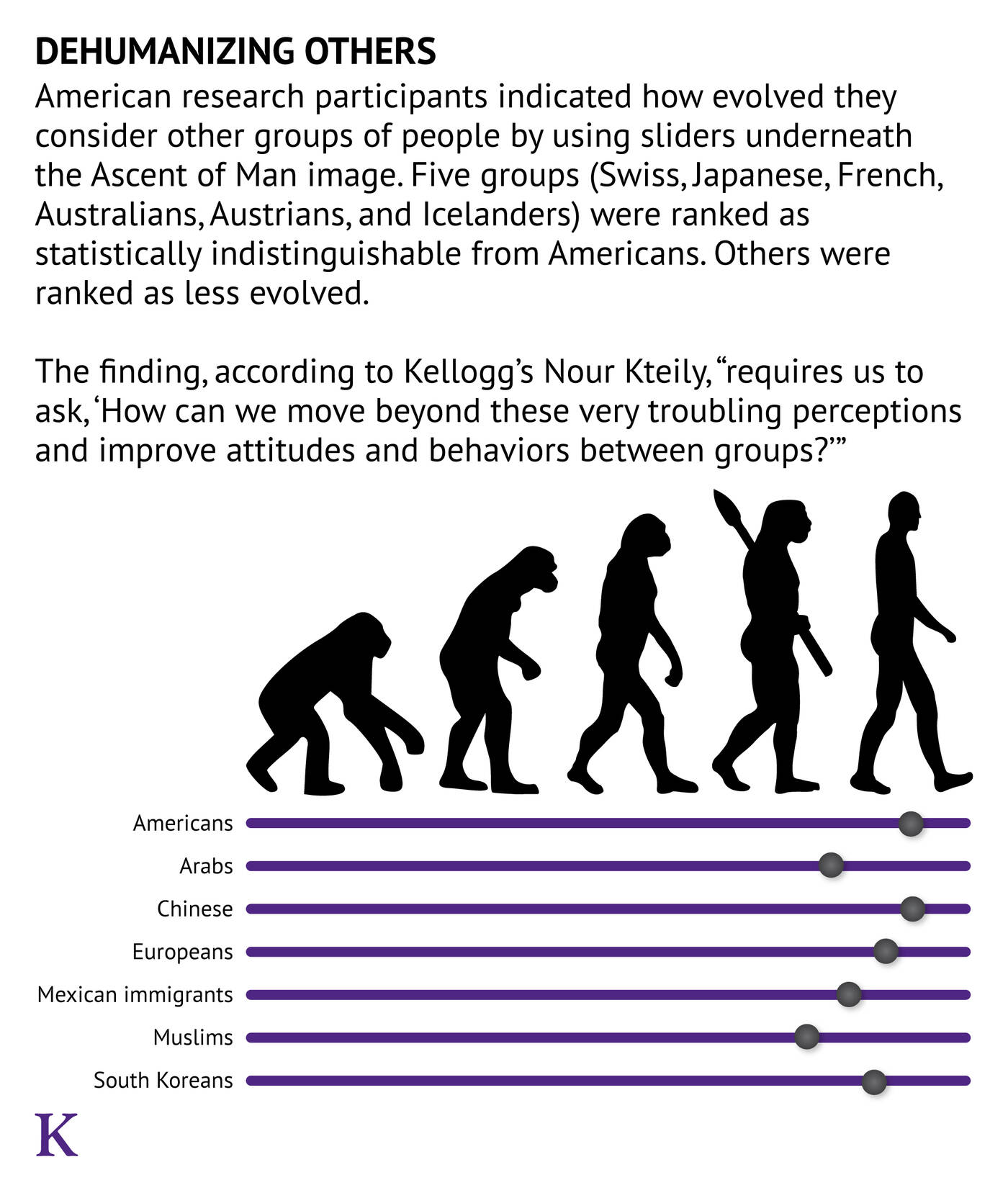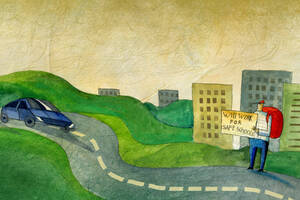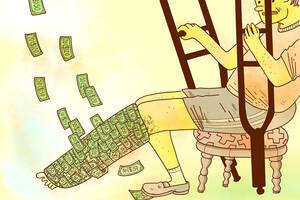We like to think that such blatant examples of bias are behind us. And, indeed, in recent years scholarly research has largely moved on and now focuses on more subtle forms of dehumanization—that of doctors who think of their patients in terms of case numbers, or managers who think of their employees not as individuals but purely in terms of their utility.
But the blatant form of dehumanization—thinking that specific groups of people are less human than you—persists. And it needs to be studied. That is the thinking underlying new research from the Kellogg School.
“When I looked at the literature on dehumanization,” says Nour Kteily, an assistant professor of management and organizations, “there was a disconnect between the types of dehumanization that I was seeing and the very subtle ways that it was being assessed by researchers.”
The research shows that blatant dehumanization is very much alive and well. It is also a strong predictor of support for policies that retaliate against groups of people, such as drone attacks against Arabs, or even downright violent vengeance.
Measuring Dehumanization with the “Ascent” of Nations
In a series of seven studies, Kteily and his coauthors, Adam Waytz, a Kellogg associate professor of management and organizations, Emile Bruneau of Massachusetts Institute of Technology, and Sarah Cotterill of Harvard University, used the well-known “Ascent of Man” diagram to determine participants’ willingness to blatantly dehumanize others. The diagram, which has been altered and even parodied over the years, dates back to a Time-Life Books illustration from the 1960s. It shows five figures in silhouette who are depicted as being at different stages of evolutionary development—from a stooped quadruped on the far left to an upright human on the far right.
In their studies, the researchers asked participants to rank where various groups fall on the spectrum of evolutionary development.
“It is definitely a provocative metric,” Kteily says. “But we wanted to capture dehumanization in the most blatant and unambiguous terms possible. We wanted to make sure that there were no two ways about what’s going on here.”
The first study involved 201 Americans recruited through Amazon’s Mechanical Turk. These participants were shown the Ascent of Man diagram on a computer with 13 different nationalities or ethnic and religious groups listed below, and asked to indicate “how evolved [they] consider the average member of each group to be.”
Participants did so by moving a slider positioned next to each group to any point on the Ascent of Man scale. The researchers converted the responses to a numerical ranking from 0 to 100, with 100 representing the highest point of evolution, that being the silhouette corresponding to the “full” human.
Europeans and Americans ranked first and second with scores of 91.9 and 91.5, respectively. Six other groups were within two points of that, and thus statistically indistinguishable from Americans: Swiss, Japanese, French, Australians, Austrians, and Icelanders. Five groups scored significantly lower: Chinese (88.4), South Koreans (86.9), Mexican immigrants (83.7), Arabs (80.9), and Muslims (77.6).
“These perceptions are extreme,” Kteily says. “But they’re not limited to a fringe, with one or two people driving the effect. Pretty significant numbers of people were willing to dehumanize other groups.”
The Boston Marathon Bombings
Timing outside the lab played a key role in another study. The authors had been collecting data on Americans’ dehumanization of Arabs using Amazon’s Mechanical Turk for some time. So when the Boston Marathon bombings occurred in April 2013, this provided the researchers with the opportunity to quickly collect new data to conduct a before-and-after study and ask: Just how did the bombings sway these perceptions?
In the wake of the bombings, media outlets had widely reported that the brothers who carried out the bombings were Muslim. Because the authors only had data on dehumanization of Arabs (and not Muslims) prior to the attacks, they focused their comparison on Arabs. As the researchers note in their paper, “Although not all Arabs are Muslim and not all Muslims are Arab, these two categories are strongly associated in the United States and frequently treated as interchangeable.”
Given that data, the researchers decided to run an identical study right after the bombing and found a spike in the dehumanization of Arabs by Americans. Two months before the attacks, participants had ranked Arabs about 10 points below Americans on the Ascent of Man scale. Immediately after it, the researchers found that Arabs ranked nearly 16 points lower than Americans. Six months later, however, Americans’ dehumanization of Arabs had returned to approximately the pre-attack level. The temporary spike in dehumanization certainly suggests a causal relationship between the bombings and attitudes toward Arabs—though because the researchers surveyed different groups of people before and after the attack, this cannot be determined conclusively.
Dehumanization of Arabs also appears to predict participants’ level of support for specific public policies toward Arabs.
In the marathon bombings’ immediate aftermath, those who dehumanized Arabs to a greater extent were significantly less likely to support Arab immigration and more likely to support drone strikes in the Middle East. General support for “militaristic counterterrorism”—measures such as torture and targeting both civilians and combatants in battle—were also associated with dehumanization, along with a desire for vengeance. The latter was measured by support for a Twitter post asserting that “Muslims bombed Boston. We as a planet need to wipe them off this world. Every one of them.”
Who Is Most Likely to Dehumanize?
The researchers also found interesting correlations between participants’ willingness to dehumanize others and their own personality types. To get at this, participants were asked to take widely used personality assessment tests.
The studies found a strong correlation between the act of dehumanizing others and “social dominance orientation” (SDO), which reflects the person’s belief in the hierarchical notion that some groups are inherently superior to others. The strongest association was between dehumanizing and the most aggressive variety of SDO, known as SDO-Dominance, suggesting that blatant dehumanization is an overt way of fulfilling some individuals’ desires to keep certain groups at the bottom of the social hierarchy.
The researchers also found a significant but less pronounced association between dehumanization and right-wing authoritarianism, which is defined by a strong respect for authority figures and established traditions, as well as enthusiasm for punishing rule breakers and those who refuse to conform.
The Stakes
“It’s hard to argue that what we’re measuring here isn’t [attitudes about whether] someone is less than human,” Waytz says. Results from this project are an urgent reminder that “real discrimination persists and contributes to political violence.”
Take, for instance, the fact that in Europe soccer fans sometimes throw bananas at black players. Or that President Obama sometimes gets characterized in political cartoons as an ape.
“As global citizens, we should be concerned,” Waytz says.
“This represents a call to action,” Kteily says.“I wouldn’t say there’s a direct link between what we’re studying and what will happen in the business world tomorrow, but aside from the broader social concern, to the extent that we know that war and instability negatively influence global markets, it doesn’t bode well if these perceptions are on the rise.”
The fact that blatant dehumanization towards certain groups is both real and widespread is concerning, he says. “It requires us to ask, How can we move beyond these very troubling perceptions and improve attitudes and behaviors between groups?”





